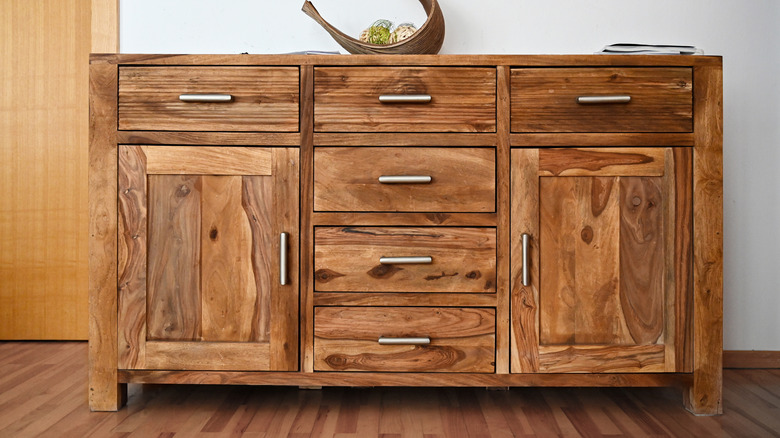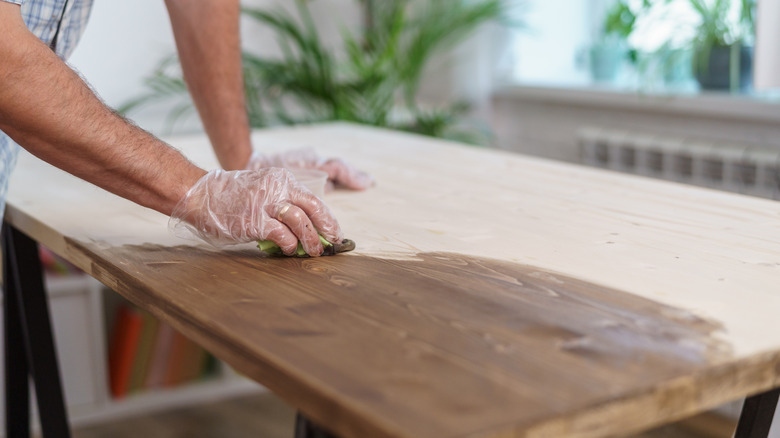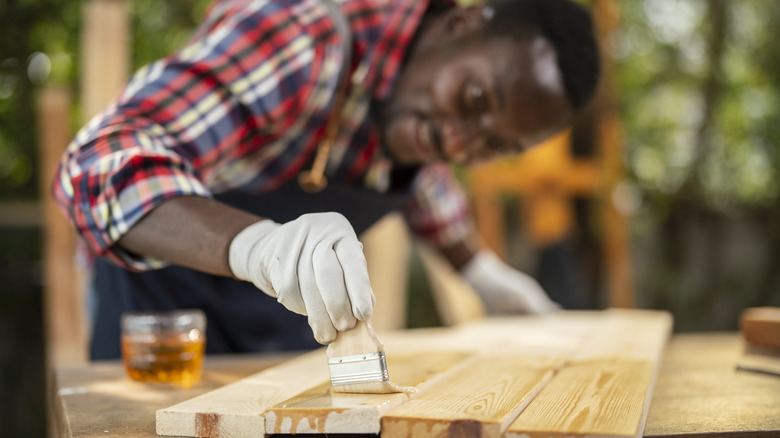A Brush Or A Rag: Which Is Better The Better Tool For Staining Wood?
Stain highlights the natural beauty of wood, but getting the results you want requires more than just the right stain color. Before using wood stain, it's important to know that the way you apply stain affects the finish. Should you use a brush or a rag to apply stain? Both application tools work, but wiping stain on with a rag is often the preferred method for fast, smooth results.
Rags offer an efficient way to apply stain exactly where you want it. You have more control over how much stain you apply to the wood, which helps you achieve the desired color without thick, uneven patches. Using a rag is particularly helpful when you're applying water-based stain because of how quickly it dries. Rags allow you to apply the stain onto the wood smoothly and evenly without ridges. If you use a brush or sprayer with water-based stain, you'll likely notice blotches or brush strokes in the finish that form because the stain dries so quickly. It may create uneven color on the wood.
When working with slower-drying oil-based stains, you may be able to apply the product with a brush. Since it takes longer to dry, the stain can absorb in an even layer without leaving behind ridges from the bristles. A brush is also ideal for inner corners or intricately detailed woodwork that's difficult to reach with a cloth. Keep a brush handy for those areas even if you're using a rag for a majority of the woodwork.
Tips for applying stain with rags
Using rags can be messier than applying stain with a brush since you're holding the stain-soaked rag. Wear old clothes and disposable gloves while you work. If you apply stain with rags, choose clean, lint-free fabric to ensure you get smooth results without lint particles in the finish. Examples of rags to use include cotton t-shirts and cheese cloth, which are both thin and make it easier to control the stain. Avoid using sponges, which will absorb a significant amount of stain, causing you to waste it.
Dip the rag into the stain, allowing it to absorb enough stain to wet the fabric without leaving it dripping wet. You'll need to continue dipping the cloth into the stain as needed to apply a consistent layer of color to the wood. Wipe the wood with the grain, covering it completely with the stain to get an even coat with a consistent color. You can wait several minutes before wiping off the excess stain, depending on how dark you want the color to appear. Let the rags dry completely to dispose of wood stain and related items safely.
Brushes often make it easier to get stain into recessed areas, such as inner corners and carved details with more texture. However, you can use a rag for those areas. The key is soaking the rag with more stain than you would normally use on flat areas of wood. This allows the color to fill those deeper areas thoroughly.
Tips for applying stain with brushes
For brush application, choose oil-based stain for more drying time. Lacquer or water-based stains applied with brushes may cause uneven color or visible brush strokes. Even foam brushes produce uneven results with water-based stains — you might notice ridges along the straight edges of a foam brush, and the air in the foam could create a bubbly finish.
Look for a brush that's made specifically for stain to get enough stain onto the wood surface. For oil-based stains, choose a brush with natural bristles, which often help deposit the color evenly with less risk of bristle marks. Natural bristles also hold up well when you clean them using mineral spirits, which is the best method for cleaning a paintbrush with wood stain on it. Because of that, natural-bristled brushes tend to last longer than other brush types. If you decide to use a brush with water-based stains, look for synthetic bristles. Natural bristles tend to swell due to the water, which can cause them to lose their shape and give you sub-par results.
Apply a generous layer of stain to the wood using your brush. Go with the wood grain when applying the stain. Working quickly allows you to achieve an even, substantial layer of stain with less risk of brush marks. You can wipe the excess stain away immediately or let the stain sit for a few minutes for a darker, richer look. Then, use a clean cloth to wipe off the excess color.


